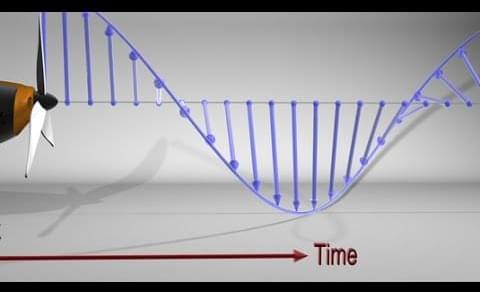Feb 3, 2023
Ancient Skull Found in China Might Be Homo Erectus
Posted by Dan Breeden in category: futurism
The million-year-old skull, dubbed “Yunxian Man 3,” is extraordinarily well-preserved compared to previous finds.
The million-year-old skull, dubbed “Yunxian Man 3,” is extraordinarily well-preserved compared to previous finds.

Three years ago, the study of black holes was revolutionized. Now, the team is turning to the closest supermassive black hole to Earth — the one at the center of the Milky Way.
Scientists are using artificial intelligence (AI) to decipher 22,000 ancient cuneiform tablets.
Renowned physicist Neil Turok, Holder of the Higgs Chair of Theoretical Physics at the University of Edinburgh, joins me to discuss the state of science and the universe. is Physics in trouble? What hope is there to return to more productive and Simple theories? What is Peter Higgs up to?
Neil Turok has been director emeritus of the Perimeter Institute for Theoretical Physics since 2019. He specializes in mathematical physics and early-universe physics, including the cosmological constant and a cyclic model for the universe.
In the year 1,808, French chemists Joseph-Louis Gay-Lussac and Louis-Jacques Thenard, and independently, English chemist Humphry Davy, discovered the fifth element of the periodic table—boron. In crystalline form, boron primarily possesses three polymorphs, i.e., three distinct unit cell configurations: α-rhombohedral, β-rhombohedral, and β-tetragonal, among 16 possible bulk allotropes.
The unique properties of this element have resulted in its use in numerous applications, including chemistry, materials science, life sciences, energy research and electronics. Moreover, based on studies conducted over the past decade, boron has significant potential for use in pharmaceutical drug design as it plays an essential role in bone growth and maintenance, wound healing, prevention of vitamin-D deficiency and other processes.
In the periodic table of elements, boron lies to the left of carbon, which causes boron to have similar valence orbitals but a shorter covalent radius. In contrast to carbon, which favors a 2D (two-dimensional) layered structure (aka graphite) in its bulk form, the bulk allotropes of boron are composed of B12 icosahedral cages. As a result, it was challenging to experimentally realize a 2D atomic network of boron, also known as borophene, until 2015.
Lonnie Reid is nationally recognized in turbomachinery for his knowledge of internal flow in advanced aerospace propulsion systems. He has a long history of integrating the theoretical and experimental elements of fluid dynamics work to expand the database of compressor and fan design. He has not only demonstrated excellent leadership skills in several positions, including as chief of the Internal Fluid Mechanics Division, but has been influential in recruiting and mentoring the next generation of scientists and engineers.
Lonnie Reid was born on September 5, 1935, in Gastonia, North Carolina. After serving in the U.S. Army, he earned a mechanical engineering degree from Tennessee State University. He joined the NASA Lewis Research Center as a research engineer shortly after graduating in 1961 and spent the next 20 years as both a researcher and manager in the Compressor Section of the Fluid Systems Components Division.
In the early 1960s the group focused on improving the performance of high-speed turbopumps that pumped cryogenic propellants in space vehicles. The pumping of liquid hydrogen in near-boiling conditions, referred to as “cavitation,” was a particular concern. The fluids systems researchers improved pump designs and demonstrated the ability to pump hydrogen in cavitating conditions. These were key contributions to the success of the Centaur and Saturn upper-stage rockets.

Source: Perimeter Institute for Theoretical Physics https://youtu.be/f1x9lgX8GaE
Courtesy of the Perimeter Institute https://www.youtube.com/user/PIOutreach.
Inside the Perimeter https://insidetheperimeter.ca.
In October 2015 Neil Turok, director of the Perimeter Institute for Theoretical Physics (PI) located in Waterloo, Canada opened the new season of the PI Public Lecture Series with a talk about the remarkable simplicity that underlies nature. Professor Turok, who was born in South Africa and now lives in Canada, discussed how this simplicity at the largest and tiniest scales of the Universe is pointing toward new avenues of research and revolutionary advances in technology.
Continue reading “The Astonishing Simplicity of Everything | Neil Turok” »
Advanced new Faraday cages—the metal mesh enclosures that can block wireless signals—can also be switched on and off for reversible protection against noise, a new study finds.
In addition, these new shields can be easily fabricated through a technique akin to spray-painting, which could help them find use in electronics, researchers say.
Built out of a novel material called MXene, these cages could block and allow signals as desired.

Modern technology is supposed to make our world better. But my flat’s ‘lighting system’ is broken, and I long for a single, simple light switch.

When we look at a rainbow, we see a full spectrum of light. Every colour we could imagine. Except one – magenta. Where is it? Well, officially magenta doesn’t exist. There is no wavelength of light for magenta, meaning the human brain literally makes it up, but how? Video by Archie Crofton Narrated by Lotte Rice Commissioned by Paul Ivan Harris Follow BBC Reel on Twitter, Instagram, Facebook and YouTube.
